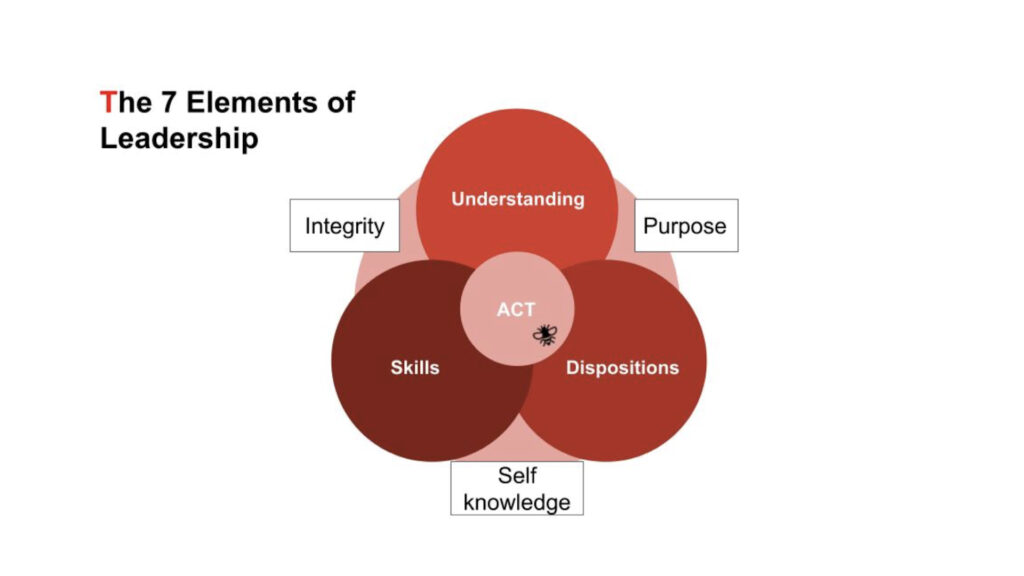
At Solutions@ we have developed a simple model to explain how we work towards the holistic development of people and leaders. We call this the 7 Elements of Leadership.

In this model our 7 elements create leadership competencies by developing understanding, skills and dispositions which lead to action. The competencies can only function with authenticity if they are founded upon core attributes of integrity, self knowledge and purpose.

The strategic leader
The strategic leader knows where they are going. They have a picture and a strong story about where they are and where they want to be and they can plug that picture into the wider canvas of organisational strategic planning. The strategic leader hasn’t taken the job to become a caretaker but to be a creator, developing powerful strategic solutions.

The intercultural leader
The intercultural leader is in tune with the complex cultural nuances within their team and is not fragile about entering into dialogue and conversational discovery about emotive issues. This leader understands that personality is a subset of culture and that different approaches are needed to get the best out of everyone in the team, creating a genuine sense of empowerment.

The courageous leader
The courageous leader knows that to have integrity and to be authentic means there is sometimes a need for difficult conversations. This leader finds ways to offer appropriate challenge and doesn’t duck difficult issues or difficult personalities. The courageous leader never allows themselves to be bullied and finds effective ways to advocate for their beliefs.

The 360 leader of influence
A leader of influence knows that they can have a much wider impact on the community than simply their own team if they make that choice. This leader goes out of their way to build relationships with people who might be called ‘senior and junior’ and they approach all of these people with the same manner – person to person. They stop and chat with the security staff, know the names of the classroom assistants, make appointments to sit and chat with senior leaders. They will know how to be significant members of the community without being hung up on the need for positional authority.

The effective leader
The effective leader knows how well they and their team are performing, basing this knowledge on quantitative and qualitative inputs. This leader articulates clear direction, uses data to set and measure goals and actively seeks feedback from all quarters. The effective leader is accountable and holds others to account.

The coaching leader
The coaching leader knows when to coach and when to direct. They seek every opportunity to build capacity in others through genuine delegation and training. They challenge if team members shun developmental opportunities. The coaching leader understands themselves and reflects deeply on their own behaviours, modelling best practice and giving a clear lead on personal health and wellbeing. The coaching leader is a good communicator and a storyteller, well known for their listening skills and their ability to communicate at a human level.

The Learning Leader
The learning leader walks the talk. This leader is constantly seeking to learn and improve – keen to share learning with others but more interested in applying and evaluating what they have learned rather than simply stock-piling information and qualifications to impress people. The learning leader is networked, constantly questions and contributes, constantly seeks to learn more about their passions and seeks always to become a better leader.
